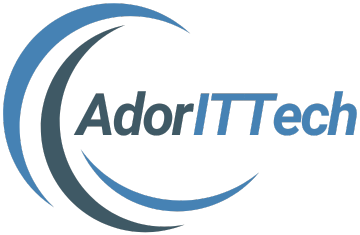The backbone of every modern website and application rests upon its backend languages. It’s these languages behind the logic, database interaction, and server functionality that help the applications run well and in turn create a flawless environment for their respective users who deal with the front-end interactions.
We will discuss in the subsequent blog, 2025 Top 5 backend languages which rule the tech world. These back-end programming languages proved their worth as scalable and high-performance languages coupled with good developer friendliness, making them essential to modern web development.
1. Python: The Multi-Purpose Backend Language
Why Python is the first choice for the development backend
It has gained popularity for being an easy, versatile language that has an extensive application range. Whether it is a small application or an enterprise solution that is complex, Python’s easy syntax and powerful frameworks make it an obvious choice.
Key Features of Python for the Backend
- Asynchronous Support: Python does multiple things simultaneously; it’s the asynchronous capability that makes this happen.
- Huge libraries: libraries such as Pandas, NumPy, and Matplotlib provide the easiest way to develop data-centric applications.
- Scalability and Security: Python frameworks such as Django and Flask come with in-built tools to develop secure and scalable applications.
Use Cases of Python in Backend
- Web Development: Instagram uses Python’s Django framework to handle its huge traffic.
- Data Science and AI: Python is the power behind AI and machine learning platforms like TensorFlow and PyTorch.
- Automation: Many organizations use Python to script and automate back-end operations.
Python has progressed its flexibility and dynamic web environment further up on the list of the leading backend languages for general web development.
2: Node.js: JavaScript-Based Backend Language
Why Node.js is Revolutionary for Backend Languages
JavaScript was one of the languages which normally used to have a front-end orientation. The rise of Node.js made it possible to consider JavaScript as a full stack. This has given the developer an ability to do the client-side as well as the server-side using the same language.
Main Characteristics of Node.js as a Backend Language
- Event-Driven Architecture: Because Node.js features a non-blocking I/O model, it is designed to be especially efficient in performing concurrent requests.
- Scalable Applications: The above usage is meant for building scalable, high-performance applications like chat and streaming platforms with Node.js.
- Rich Ecosystem: Node.js has access to a huge number of packages ready to use through the npm, that is, the Node Package Manager.
Famous Applications Built on Node.js
- Netflix: Taking advantage of Node.js’s scalability; manages millions of concurrent users.
- LinkedIn: Reduced the server load and increased application speed by moving to Node.js.
- PayPal: Uses Node.js for handling transactions very quickly and efficiently.
Node.js has taken the world by storm by uniting frontend and backend, so it is very powerful as a backend language in real-time applications.
3. Java: A Timeless Backend Language
Why Java Remains a Backend Languages
Java has been in existence since ages ago. It is very robust, it is independent of the platform where it runs on and, above all, secure. Most people choose it because of the reliability it provides. The “write once, run anywhere” principle will ensure that a Java-built application can run very smoothly across platforms.
Most Valuable Features of Java for Backend Development
- Enterprise-Grade Security: Java includes inherent security elements, making it appropriate for bank and financial system applications.
- Frameworks of Productivity: Frameworks such as Spring Boot and Hibernate make backend work, such as database management and API integration, easier.
- Scalability: Java is highly scalable and can handle a very large number of users with complex operations.
Examples of Java in Backend Development
- Banking Applications: Many banking institutions rely on Java for the secure processing of transactions.
- E-commerce Platforms: Large-scale e-commerce websites, such as Amazon, were also developed using Java.
- Android Development: Java is the language of choice for developing Android applications.
Despite the rise of newer backend languages, Java is still doing great because of its reliability and enterprise-focused capabilities.
4. PHP: The Backend Language for Dynamic Websites
Why PHP is Still Relevant for Backend Development
PHP has ruled backend development since ages, with respect to development of dynamic web applications and a CMS. Despite regular updates and new releases, the recent PHP 8 has come into the light to be competitive enough in backend language.
Main Advantages of PHP in the Backend
- Database Integration: PHP works flawlessly with MySQL, PostgreSQL, and other databases to make backend processes easier.
- Open-Source Community: PHP’s active community ensures abundant resources, plugins, and tools for developers.
- Cheap: PHP is open-source, so it offers a cost-effective alternative for small businesses and start-ups.
Popular Platforms Built in PHP
- WordPress: It powers over 40% of websites worldwide, making PHP the leader in CMS development.
- Wikipedia: Uses PHP for its non-linear, community-generated content.
- Facebook (Historically): Facebook started with PHP but then shifted to custom implementations.
Despite changes, PHP stays as a valid and cost-efficient backend language mainly for projects involving rapid development along with dynamic management of content.
5. Ruby: The Dev-Friendly Backend Language
Why Ruby and Ruby on Rails Stand Out
Ruby is famous for the fact that, with the Ruby on Rails framework, it tends to focus on developer happiness. This language stresses simplicity and productivity, so the developer can write clean, readable code. For example, the Rails framework, following the principle of “Convention over Configuration,” minimizes the boilerplate code.
Features of Ruby That Make It Best for Backend Development
- Elegant Syntax: Elegant syntax of Ruby naturally helps reduce development time and error.
- Rapid Development: It automatically does the majority of the back-end repetitive jobs thus develops rapidly.
- Built-in Security: Rails has inherent features that safeguard against several common vulnerabilities, including SQL injection.
Applications Powered by Ruby
- GitHub: Born on Ruby on Rails, today GitHub is the world’s biggest platform for developers.
- Shopify: Allows businesses to create online stores with minimal setup, thanks to Rails.
- Airbnb: Highly dependent on Ruby to manage its massive user base and dynamic content.
Ruby is a popular backend language for start-up or projects that need faster prototyping and development.
How to Choose the Right Backend Languages for Your Project
Consider the following when selecting a backend languages:
- Project requirements: Project requirements vary as some are good at different things. To be specific, Python is excellent for data-driven apps, but PHP is rather perfect for CMS-based projects.
- Scalability: With the project which might be designed for millions, then Java as well as Node.js is required.
- Development Speed: Ruby on Rails is perfect for startups that need to go live quickly.
- Community Support: The active communities of languages like Python and PHP provide the availability of resources and timely updates.
Be sure to choose the right backend language for your project; that will make it or break it.
Conclusion
Backend languages fuel the modern web. They ensure applications operate efficiently, with good security guarantees, and even ensure that projects scale up the right way to their needs. Be it flexibility like Python, simplicity like Ruby, or an ability to help scale enterprise Java, Node.js real-time, the right choice for the language of the project unlocks endless possibilities.
It will be quite vital for the developer and the businesses to be up-to-date as technology is being developed further with these languages. Explore all the options, test their features, and pick what best fits your goals.
FAQ’s
1. What is the easiest backend language to learn?
It is the easiest one with clear syntax and much resource support available in Python.
2. What is the most scalable backend languages?
Projects demanding scalability with top performance should make use of either Java or Node.js.
3. Do I need a separate backend languages for every project?
While it might be tempting to use just one language -for example, both Python and JavaScript are relatively multi-purpose-this decision is actually pretty project-type specific.
4. What are the best backend languages for startups?
Ruby with Rails and Node.js are used for startups, mainly because of their rapid development.
5. Is PHP still relevant for backend development?
Absolutely! PHP still is a powerful backend language especially for content-driven web sites like WordPress.


